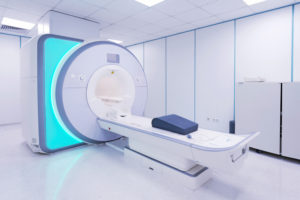 You may have heard of numerous types of diagnostic imaging that doctors can use- x-rays, CT scans, and MRIs are all very popular. These all help doctors to see the inside of your body better, but you may not understand the differences. Why would a doctor recommend an MRI scan instead of the simpler x-ray? It doesn’t necessarily mean that they suspect something more serious. If you’ve been sent for an MRI and don’t understand why, this serves as a guide to all things MRI and why you may need one.
You may have heard of numerous types of diagnostic imaging that doctors can use- x-rays, CT scans, and MRIs are all very popular. These all help doctors to see the inside of your body better, but you may not understand the differences. Why would a doctor recommend an MRI scan instead of the simpler x-ray? It doesn’t necessarily mean that they suspect something more serious. If you’ve been sent for an MRI and don’t understand why, this serves as a guide to all things MRI and why you may need one.
How MRIs Work
MRI scans are diagnostic procedures, known as magnetic resonance imaging, that use a combination of large magnets and radio frequencies along with a computer in order to produce detailed images of organs and structures within the body. This technology means they do not rely on ionizing radiation like CT scans or x-rays do.
MRI machines are large, cylindrical tubes made of very large magnets that create a strong magnetic field around the patient, who lays inside of the tube’s opening. The combination of these magnetic fields and radio waves alter your atoms’ natural alignment, causing them to pulse and then realign in the body, sending out signals. The computer can then analyze these signals and convert them into two-dimensional images of the body structure or organ in question.
These images are then evaluated by your doctor, and specialists called radiologists, to identify abnormalities or better understand any internal issues you may be having.
When MRIs Are Used
MRIs can produce images of organs, soft tissue, bones, and other systems within the body. Compared to CT scans, MRIs do a better job of contrasting normal and abnormal tissues, making them ideal for diagnosing small or complex issues.
The heart, blood vessels, bones, joints, organs, and breast tissue can all be examined using an MRI scan. The most common uses of MRI scans are often to look at the brain and spine, as they are both complex systems that may require in-depth analysis. When issues are suspected with the brain or spinal cord, MRIs can be used to rule out or identify issues such as:
- Damage to the blood vessels
- Brain injuries
- Tumors
- Multiple sclerosis
- Injuries to the spinal cord
- Stroke
- Inner ear or eye problems
- Aneurysms
- Hemorrhage, with bleeding into the brain or spinal cord
- Herniation of discs in the spine
When needed, a certain type of scan known as an fMRI or functional MRI scan can also be used to identify the location of specific functions in the brain. For example, if there is a condition that is impacting speech or memory, treatment may be aided by these scans.
What Is Getting an MRI Scan Like?
What to expect on your first chiropractor visit to get an MRI? One of the reasons you may worry if your doctor recommends an MRI is that you have heard horror stories about them. MRI scans are long and may be awkward, but they should not be painful at all.
When you arrive for your MRI, you will go to a special room that houses the large machine. You’ll be asked to remove any metal such as jewelry, glasses, hearing aids, hair pins, or dental work. You’ll then change into a hospital gown. In some cases, you may be given an IV or oral contrast solution.
You will be asked to lay on a table in the center of the metal tubes. Depending on what is needed, pillows or straps may be used. The technologist will be in a separate room that controls this table, moving you as needed within the tube. They may communicate via a speaker to tell you to be still, breathe, or move as needed.
The scan can be loud, so you may be offered headphones or earplugs. Some people are bothered by the noise or the confined space and may be given extra medication to help with anxiety.
You should not feel anything during the scan, besides potential discomfort at lying still for a long period of time. If you were not given sedatives, you can move around and resume your day as normal as soon as the scan is over.
Where Do I Get an MRI?
MRI scans will be recommended to you by a doctor when they are necessary. A chiropractor, orthopedist, or neurologist may send you for the procedure. At AICA Conyers, our specialists have the benefit of an on-site diagnostic imaging center, allowing them easy access to your results without you having to travel between locations. If your AICA Conyers doctor recommends an MRI, we will ensure it is part of your holistic treatment plan and walk you through the process.
